Dab some of Mother Nature’s rouge around the home for an eye-opening look
By Laura Gaskill - Houzz Contributor
From blazing fires and sunsets to breathtaking rocks, fall foliage and flowers, red is the color of drama. Decorating with red,
when done right, can bring a room to life like nothing else. Let’s have
a look at this powerful hue through the lens of nature.
Red in Nature
Red in the natural world inspires awe. It’s dramatic red rock formations in the desert, the flash of a cardinal’s wing, the blaze of maple trees in the fall. Red is used to attract, as in juicy strawberries and vibrant red tulips — but also to warn, as in poisonous mushrooms and hot chili peppers. Thinking about this dual nature of red, it makes sense that people tend to either love it or hate it in their homes. Red can be cheerful and positive, like plump apples and rosy cheeks, or full of daring, like a red sunrise or the heart of a bonfire.
The particular red of fall leaves tends to be on the warm side, with a bit of orange. The contrast of red leaves against a sky — either brilliant blue or steely, overcast gray, makes the leaves even more vivid by comparison. Natural companion colors are yellow, orange and green; and later in the season, brown. Real red apples (not supermarket Red Delicious) that ripen in the early fall are also on the warm side, with hints of pink and green.
Red in the natural world inspires awe. It’s dramatic red rock formations in the desert, the flash of a cardinal’s wing, the blaze of maple trees in the fall. Red is used to attract, as in juicy strawberries and vibrant red tulips — but also to warn, as in poisonous mushrooms and hot chili peppers. Thinking about this dual nature of red, it makes sense that people tend to either love it or hate it in their homes. Red can be cheerful and positive, like plump apples and rosy cheeks, or full of daring, like a red sunrise or the heart of a bonfire.
The particular red of fall leaves tends to be on the warm side, with a bit of orange. The contrast of red leaves against a sky — either brilliant blue or steely, overcast gray, makes the leaves even more vivid by comparison. Natural companion colors are yellow, orange and green; and later in the season, brown. Real red apples (not supermarket Red Delicious) that ripen in the early fall are also on the warm side, with hints of pink and green.
Using fall red in the home:
A clear, warmish red, the color of sugar maple leaves, is a
conversation-inducing color ideally suited to a sitting room or dining
room.
Red with blues and grays. One
of the most striking mates for red in nature is blue. Consider red
blooms beside a silvery gray succulent, scarlet leaves against a slate
sky or a fiery sunset over an inky sea.
Using red and blue at home:
Red and blue together can be quite dramatic, as in the living space
shown here. Dark gray acts as a foil for vibrant blue and flashes of red
— this is a look not for the color-shy!
In the dining room shown here,
vivid red and blue are tempered by large swaths of white and plenty of
natural wood, making for a dramatic yet livable space. Also note that
the shade of the blue chairs is closer to turquoise, which reads as a
cheerier color (the color of summer skies) than inky blue (the hue of a
frothy sea).
Using red and gray at home:
Red and gray are quite easy to work with, especially when the gray is a
natural material (like slate tiles) and the red is a glossy accent,
like the Tolix stools shown here. Think of the red as a fiery flash —
the burst of a bonfire on a beach.
Red and yellow in nature. Deeper
reds and yellows appear together in fall, but if an autumnal look is
not your cup of tea, you may still like red and yellow together in
another way. Think of a fresh, bright summer garden, abundant with
blooming roses — the reds are pure and sparkling; the yellows are
creamy.
Using red and yellow at home: Cream
and buttercup make inviting mates to red in this cheerful living room
scheme. Plenty of crisp, spotless white keeps the red and yellow feeling
current.
Red on exteriors. Red has a
long history as an exterior color. Think of red barns, red doors and
red temples. A bright, clear red trim can look splendid against
weathered wood siding or shingles, or make a bold statement on a white
house. To go with red as an allover exterior color, try a slightly
dulled, warm cranberry; it tends to be more pleasing to the eye than a
too-bright red.
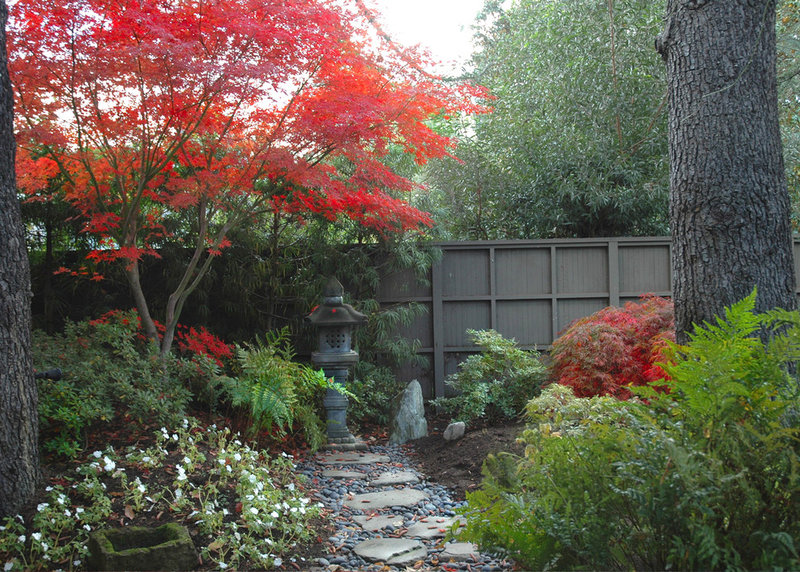
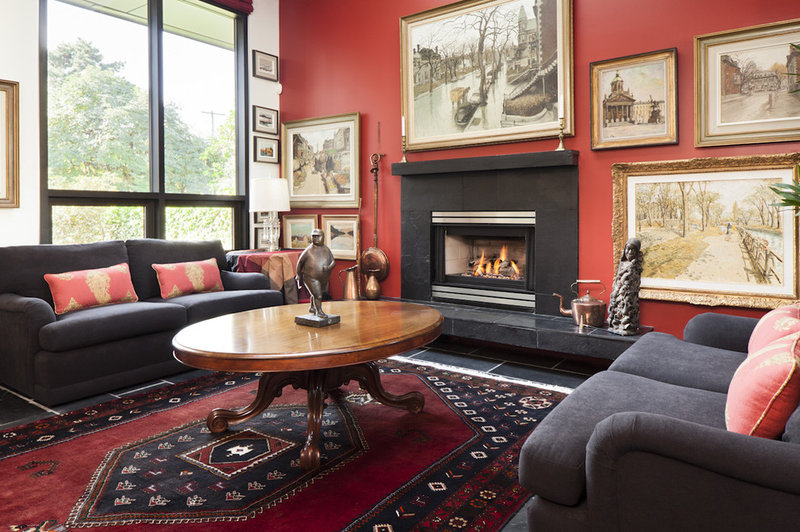
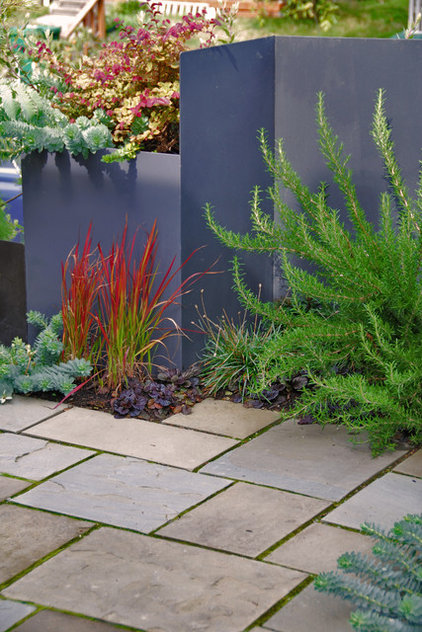
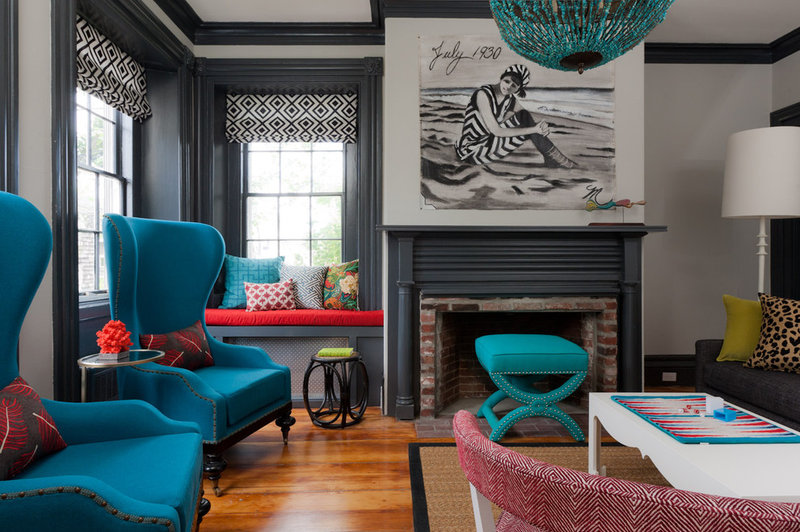
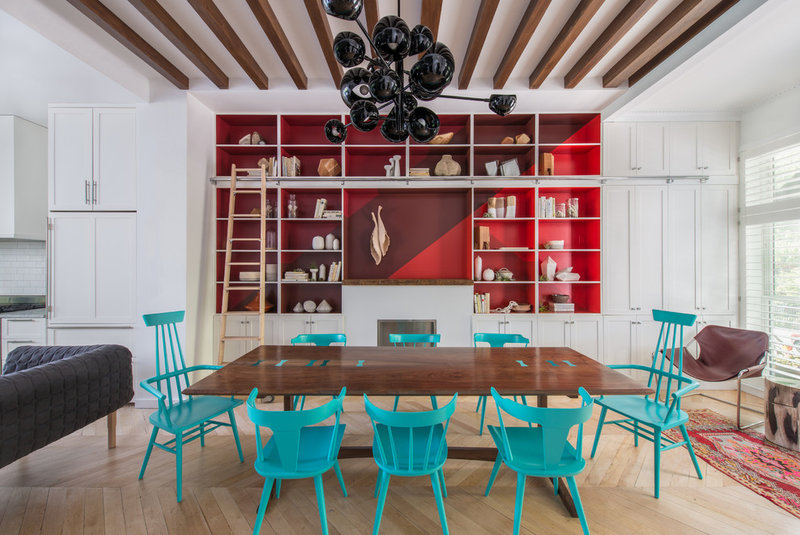
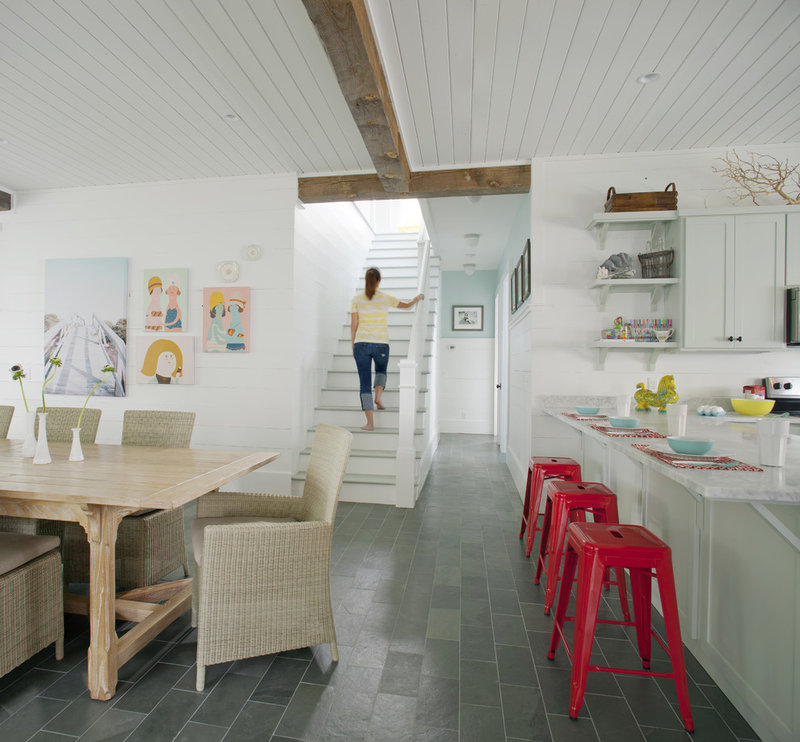
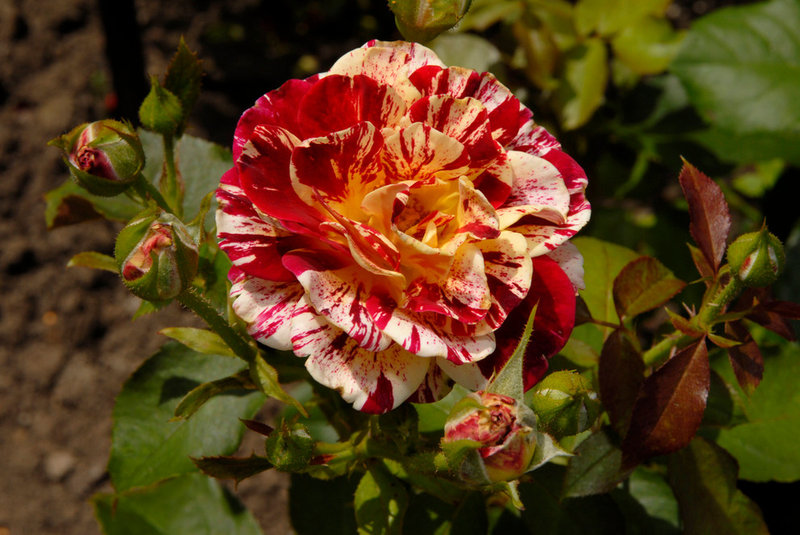
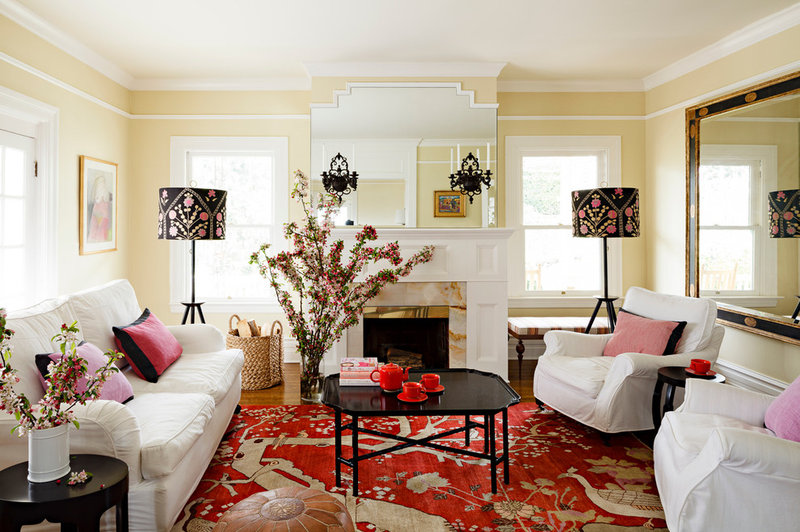
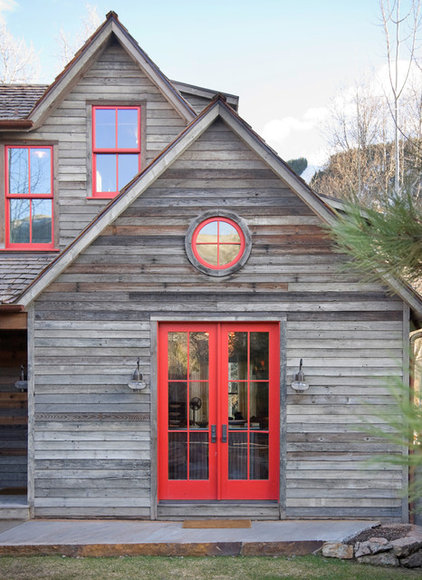
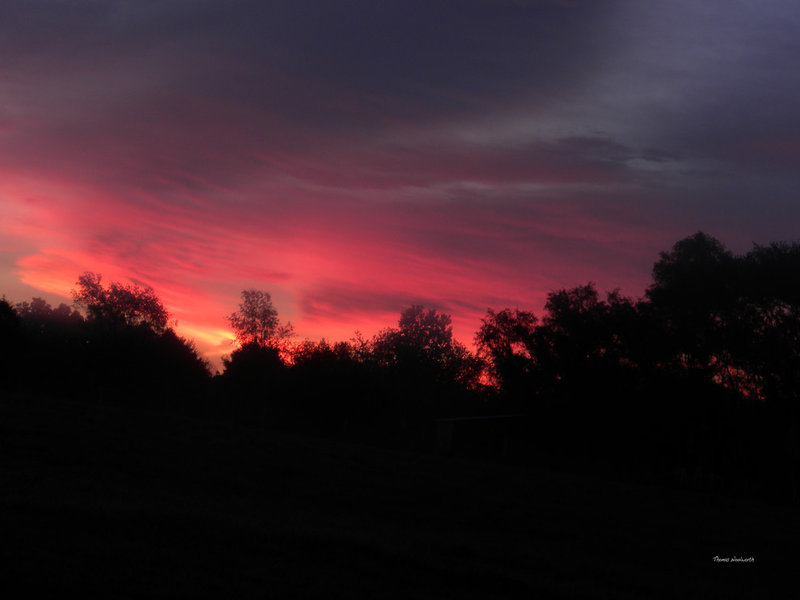
No comments:
Post a Comment